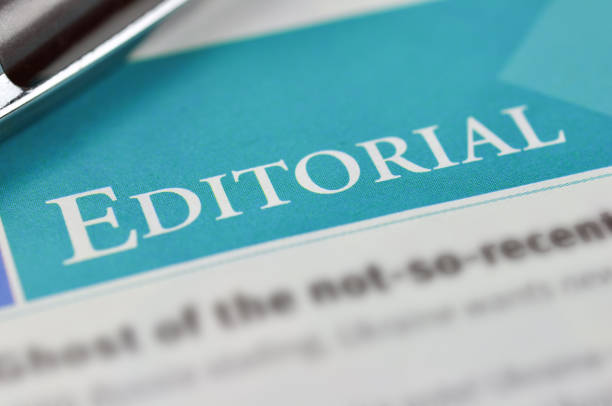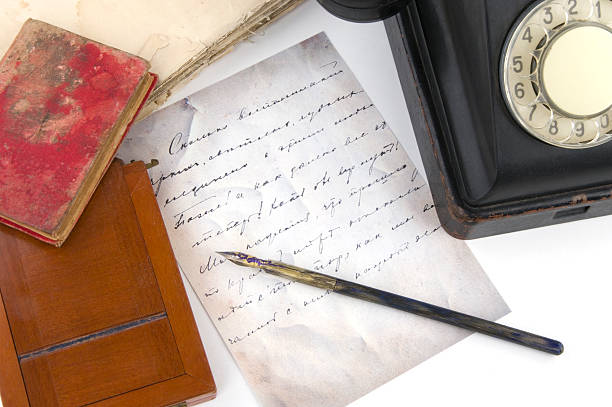How To Write An Editorial (A Guide For Beginners- 2024)
How To Write An Editorial
How To Write An Editorial: Embarking on the journey of crafting an editorial is akin to stepping into the arena of persuasive prowess, where words transform into instruments of influence and ideas wield the power to shape perspectives.
Writing an editorial is not merely an exercise in expression; it is a strategic dance with language, a nuanced symphony where the writer conducts a persuasive melody to engage, inform, and provoke thought.
In this guide, we will navigate the intricate landscape of editorial writing, exploring the art of selecting compelling topics, conducting in-depth research, and honing a writing style that resonates with the intended audience.
From the careful structuring of arguments to the final polish of every word, this exploration aims to unravel the layers of expertise required in the craft of creating editorials that leave an indelible mark on readers.
So, let’s embark on this intellectual voyage, where the pen becomes a mighty sword, and the editorial, a canvas upon which the art of persuasion is painted.
How To Write An Editorial
Certainly! Here’s a step-by-step process on how to write an editorial:
Choose a Topic
Select a current and relevant issue that you are passionate about or that you believe needs attention. Ensure that the topic is of interest to your target audience.
Research Thoroughly
Gather facts, statistics, and background information related to your chosen topic. Understand different perspectives and arguments surrounding the issue. This will help you present a well-informed opinion.
Define Your Main Argument (Thesis)
Clearly state your main point or opinion on the issue. This should be a concise and specific statement that encapsulates your stance on the topic.
Create an Outline
Organize your thoughts and key points in a logical order. Plan the introduction, body paragraphs, and conclusion. Each section should contribute to building and supporting your main argument.
Write a Compelling Introduction
Grab the reader’s attention with a strong opening. Provide context for your topic, present the issue, and introduce your thesis statement.
Develop Coherent Body Paragraphs
Each paragraph should focus on a specific sub-point or piece of evidence that supports your main argument. Provide examples, quotes, or data to strengthen your position. Ensure smooth transitions between paragraphs.
Consider Counterarguments
Address potential counterarguments to strengthen your editorial. Acknowledge opposing views and explain why your perspective is more valid or persuasive.
Maintain a Consistent Tone
Choose a tone that suits the nature of the issue and your audience. Be persuasive, but also respectful and objective. Avoid offensive language or personal attacks.
Craft a Strong Conclusion
Summarize your key points and restate your thesis in a compelling way. Leave a lasting impression on the reader, encouraging them to reflect on your perspective.
Revise and Edit
Review your editorial for clarity, coherence, and grammar. Check for consistency in your argument and eliminate unnecessary repetition. Consider seeking feedback from others to get a fresh perspective.
Add a Thought-Provoking Title
Create a title that captures the essence of your editorial and entices readers to explore your viewpoint.
Submit or Publish
If you’re writing for a publication, follow the submission guidelines. Ensure your editorial adheres to any word limits and formatting requirements.
By following these steps, you can create a well-structured and persuasive editorial that effectively communicates your viewpoint on a given issue.

Understanding the Target Audience
Understanding the target audience is akin to holding the key to a secret garden, where the lush blooms of connection and resonance await.
It’s not merely deciphering demographics but embarking on an anthropological expedition into the hearts and minds of those you aim to captivate.
Imagine unraveling the intricacies of their desires, fears, and aspirations, the very fabric of their existence. Each reader, a universe unto themselves, awaits acknowledgment, yearning for content that mirrors their soul.
To understand the target audience is to embrace the role of a literary empath, tuning into the frequency of collective yearnings, and crafting a narrative that becomes a bespoke garment tailored to fit their intellectual and emotional contours.
It’s the alchemical blend of psychology, curiosity, and empathy that transforms words into a magnetic force, drawing the intended audience into a narrative embrace where they feel seen, understood, and utterly captivated.
Identifying the Readership
Identifying the readership is akin to sculpting the very clay from which your narrative masterpiece will emerge. It’s a meticulous process of demographic delineation, where age, gender, location, and socio-economic factors paint the broad strokes of your canvas.
Yet, it transcends mere statistics, delving into the nuanced world of psychographics—those elusive markers that define values, interests, and lifestyles.
Understanding your readership is akin to gazing through a kaleidoscope of individual stories, weaving a tapestry of diverse perspectives that demand acknowledgment.
Each reader, a protagonist in their narrative, seeks not only information but an empathetic connection, a resonant chord that harmonizes with their unique symphony of experiences.
In this dance of identification, a writer becomes a literary anthropologist, excavating the collective subconscious to illuminate the path toward content that not only speaks to the masses but intimately whispers to each reader, fostering a sense of belonging within the shared tapestry of words.
Selecting a Relevant and Timely Topic
Choosing a relevant and timely topic is akin to catching the rhythm of the universe and translating it into ink. It’s the art of being a literary time traveler, surfing the waves of current affairs and societal trends to uncover the gems of discourse that sparkle with urgency.
Imagine your writing as a compass, pointing not just north but toward the magnetic epicenter of the zeitgeist. It’s not merely selecting a topic; it’s orchestrating a symphony that harmonizes with the pulsating heartbeat of the world.
A relevant topic is a siren’s call to the reader, an irresistible melody echoing the collective concerns and curiosities of the present moment.
In this pursuit, a writer becomes a cultural curator, plucking the ripest fruit from the tree of discourse and presenting it to readers, inviting them to feast on the fruits of relevance and timeliness.
Current Affairs and Trend Analysis
Embarking on the journey of current affairs and trend analysis is akin to becoming an astute navigator of the ever-shifting seas of societal dynamics.
It’s the art of capturing the elusive zeitgeist, the pulse of the present, and distilling it into a narrative elixir. Current affairs are the heartbeat of the collective consciousness, and trend analysis is the compass guiding writers through the swirling currents of popular discourse.
Imagine standing on the precipice of the now, gazing into the swirling whirlpool of global events and emerging patterns.
It’s not just about staying informed; it’s about extracting the essence of these currents to craft a narrative vessel that not only sails with the winds of change but surfs the cutting edge of relevance.
In this realm, a writer transforms into a cultural alchemist, turning the raw material of contemporary events into a literary goldmine that captivates, informs, and resonates with readers who hunger for a connection with the unfolding tapestry of the world.

Research and Gathering Information
Embarking on the odyssey of research and information gathering is a thrilling expedition into the heart of knowledge, a treasure hunt where every well-mined fact becomes a gem in the crown of narrative richness.
Picture yourself as an intrepid explorer, armed not with a machete, but with the keen blade of inquiry, cutting through the dense underbrush of ignorance.
It’s not just about collecting data; it’s a dance with the cerebral cosmos, a cosmic choreography where each piece of information is a celestial body orbiting the central thesis.
Research is the magician’s wand, and information gathering is the summoning spell that brings forth the magic of insight.
In this symphony of discovery, a writer metamorphoses into an intellectual sleuth, solving the enigma of ignorance one researched clue at a time, weaving a tapestry of enlightenment that captivates readers and elevates the narrative to the celestial realms of erudition.
In-depth Research Methods
In-depth research methods are the alchemical processes through which a writer transforms the raw ore of curiosity into the refined gold of comprehensive understanding.
Imagine donning the cloak of a literary detective, armed not just with a magnifying glass but with an arsenal of tools ranging from scholarly articles to the vast labyrinth of digital archives.
It’s a deep dive into the ocean of knowledge, where the careful curation of reliable sources and the discerning eye for credibility are the compass guiding the scholarly ship.
In-depth research is not a mere surface exploration; it’s an excavation into the subterranean layers of information, unearthing hidden gems that add layers of richness to the narrative.
Through meticulous fact-checking, cross-referencing, and the discerning evaluation of various perspectives, a writer becomes an intellectual archaeologist, piecing together the fragments of data to construct a narrative edifice that stands as a testament to the rigors of thorough inquiry.
Crafting a Compelling Thesis Statement
Crafting a compelling thesis statement is akin to forging the beating heart of your narrative—an art form that demands both precision and passion.
Imagine your words as a blacksmith’s hammer, shaping the molten core of your argument into a finely honed blade that cuts through the fog of ambiguity.
It’s not merely a declaration; it’s a clarion call that resonates through the corridors of intellect, demanding attention.
A well-crafted thesis is more than a roadmap; it’s a charismatic guide, inviting readers to embark on a journey of enlightenment.
Like an architect designing the blueprint of a majestic structure, a writer, through the thesis, lays the foundation for a narrative that stands tall and resolute against the winds of skepticism.
It’s the orchestration of language into a symphony of persuasion, where each note builds towards a crescendo of intellectual revelation, leaving readers not just informed but inspired by the symmetrical elegance of a thoughtfully articulated thesis.
Formulating a Clear and Concise Thesis
Formulating a clear and concise thesis is akin to distilling the essence of a complex idea into a potent elixir of intellectual clarity.
It’s the art of linguistic precision, a process where words become chisels, carving away the superfluous to reveal the sculpted core of your argument.
Imagine your thesis as a lighthouse beacon, cutting through the fog of ambiguity to guide readers safely through the seas of your discourse.
Clarity is not merely about being understood; it’s an invitation for readers to navigate the narrative with confidence, assured that each sentence is a stepping stone leading toward a crystalline understanding.
A concise thesis is a literary gem, multifaceted and devoid of unnecessary embellishments, radiating brilliance in its simplicity.
In this craft, a writer transforms into a linguistic sculptor, carefully molding each word until the thesis emerges as a masterpiece—an intellectual compass that not only points the way but illuminates the entire terrain of thought.

Structuring the Editorial
Structuring the editorial is like architecting a symphony of ideas, where each section harmonizes to create a compelling narrative crescendo.
Picture yourself as the conductor of an intellectual orchestra, with the introduction as the opening overture—a magnetic prelude that captures attention.
The body paragraphs then dance in harmony, a choreography of arguments and counterarguments, each step building upon the last, a ballet of persuasion.
The conclusion, akin to a grand finale, is not merely a cessation but a lingering echo, leaving readers with the resonance of your thesis.
It’s a structural ballet, not just about arranging words but orchestrating emotions and thoughts. In this editorial architecture, a writer transforms into a literary choreographer, ensuring that every movement serves a purpose, leading the audience through a carefully curated performance that transcends the mundane and elevates the editorial to a masterpiece of structured persuasion.
Introduction
The introduction of an editorial serves as the literary overture, a captivating melody that beckons readers into the symphony of ideas to follow.
It’s not merely a gateway; it’s a magnetic portal, inviting the audience to step into a realm of thought. Imagine the introduction as a carefully crafted invitation, adorned with an engaging hook that captivates attention and a thesis statement that stands as the event’s raison d’être.
It’s a literary handshake, setting the tone for the discourse to unfold. A well-crafted introduction is more than a preamble; it’s a promise, a whispered assurance that the reader’s investment of time will be rewarded with intellectual richness.
In this inaugural dance of words, a writer assumes the role of a welcoming host, inviting readers into a curated space where ideas converge, and the unfolding narrative promises to be nothing short of enlightening.
Polishing the Writing Style
Polishing the writing style is akin to honing a rare gem, each facet reflecting the writer’s commitment to elegance and clarity.
Imagine words not just as tools but as brushes, delicately smoothing the rough edges of expression until they gleam with literary luminescence.
It’s not merely about correctness; it’s a pursuit of aesthetic brilliance. Picture the writing style as a bespoke suit, tailored to fit the contours of the narrative with sartorial precision.
It’s a symphony of rhythm and cadence, where each sentence is a note contributing to the harmonious melody of the entire composition.
In this pursuit, a writer transcends the role of a mere wordsmith and becomes a literary artisan, meticulously sculpting language into a masterpiece that not only conveys information but enchants the reader with the sheer beauty of its expression.
Tone and Voice
Tone and voice in writing are the nuanced brushstrokes that paint the canvas of communication, adding layers of depth and personality to the narrative.
Imagine tone as the emotional hue that tints the words, setting the overall atmosphere of the piece, whether it be authoritative, conversational, or empathetic.
Voice, on the other hand, is the distinct fingerprint of the writer—a unique signature that resonates throughout the work.
It’s not just about what is said but how it is said, the cadence and rhythm that create a literary melody. A skilled writer navigates the spectrum of tone and voice, shifting effortlessly to suit the demands of the message and the expectations of the audience.
In this delicate dance, a writer transforms into a linguistic virtuoso, playing with tone and voice like a maestro conducting an orchestra, creating a symphony that captivates and resonates with the reader on a deeply personal level.
Incorporating Persuasive Techniques
Incorporating persuasive techniques into writing is akin to wielding a literary wand, casting spells of conviction and influence with each carefully chosen word.
Think of the writer as a rhetorical magician, conjuring metaphors, similes, and analogies that dance through the narrative like sparks of intellectual fireworks.
It’s not just about conveying information; it’s the art of seduction, luring the reader into a realm where persuasion is not a force imposed but a shared revelation.
A skilled writer embraces the dual nature of persuasion, balancing emotional resonance with logical precision. Imagine each sentence as a persuasive potion, stirring not just the intellect but also the heart.
In this alchemical craft, a writer becomes a linguistic sorcerer, weaving a spell that transforms the mundane into the mesmerizing, leaving readers not just informed but enchanted by the persuasive power of the written word.
Rhetorical Devices
Rhetorical devices are the linguistic acrobats of the written word, the subtle tools that turn prose into a captivating performance.
Picture them as the spices in a literary kitchen, adding zest and flavor to the narrative. Metaphors, similes, and analogies act as the poetic palette, painting vivid pictures that linger in the reader’s imagination.
Repetition and parallelism, the rhythmic drumbeats, infuse a cadence that resonates with hypnotic allure. These devices are not mere embellishments; they are the strategic maneuvers that elevate writing from the ordinary to the extraordinary.
A skilled writer, armed with rhetorical devices, becomes a verbal architect, constructing a narrative not just to convey information but to elicit emotion, spark introspection, and forge an enduring connection with the reader through the artful play of language.
Editing and Revision
Editing and revision are the backstage maestros, the unsung heroes transforming a rough draft into a symphony of refined brilliance.
Imagine the editing process as a surgical dance, where each incision removes the extraneous and hones the narrative to its sharpest edge.
It’s not just about correcting grammatical missteps; it’s sculpting prose until it gleams with the polished elegance of a well-cut diamond.
Revision, akin to a literary alchemist’s touch, transmutes the raw material of ideas into intellectual gold, refining the essence until it resonates with precision.
Think of it as a writer’s quest for perfection, an odyssey where every word is scrutinized, every sentence dissected, and every paragraph reshaped until the entire manuscript gleams with the sheen of narrative excellence.
In this meticulous craft, a writer assumes the role of both creator and critic, weaving and unweaving the tapestry of words until the story emerges not just coherent but as a masterpiece that stands the test of literary scrutiny.
Peer Review and Feedback
Peer review and feedback are the invaluable compasses guiding a writer through the labyrinth of self-expression, offering both illumination and calibration.
Envision the process as a collaborative constellation, where fellow writers act as celestial companions, navigating the same creative cosmos.
Peer review is not just a mechanism for error detection; it’s a collective exploration, a symposium of diverse perspectives converging to enrich the narrative.
Feedback, delivered with thoughtful precision, is the compass needle gently nudging the writer toward improvement.
It’s an artistic dialogue, a shared venture where each critique serves as a brushstroke refining the literary canvas.
In this reciprocal dance, a writer transforms into a humble architect, constructing a narrative not in isolation but in the collaborative echoes of constructive feedback, ensuring the final composition not only bears the mark of individual creativity but also the collective fingerprints of shared refinement.
Crafting a Strong Headline
Crafting a strong headline is akin to fashioning the golden key that unlocks the treasure chest of your narrative, an art where brevity meets brilliance.
Imagine the headline not merely as an entry point but as a captivating overture, a seductive whisper that beckons readers into the unfolding drama.
It’s the siren song that lures attention in a sea of words, each syllable a carefully chosen note in a symphony of curiosity.
Crafting a headline is the calligraphy of anticipation, where the brushstrokes must be bold enough to capture attention yet delicate enough to invite further exploration.
It’s not just about summarizing; it’s about encapsulating the essence of your narrative in a linguistic truffle—a tantalizing morsel that leaves readers craving the entire feast of your words.
In this literary alchemy, a writer becomes a headline maestro, orchestrating a melody of words that resonates with the reader’s curiosity, inviting them to step into a world where every sentence is a revelation waiting to unfold.
Importance of a Compelling Headline
The importance of a compelling headline cannot be overstated; it stands as the vanguard, the sentinel, and the initial ambassador of your narrative.
Think of it as the literary handshake extended to potential readers in the vast marketplace of ideas. A compelling headline is not merely a string of words; it’s a magnetic force, capable of grabbing attention in the blink of an eye and holding it in a steadfast embrace.
It’s the ambassadorial introduction, tasked not only with summarizing the essence of your story but with seducing curiosity and enticing exploration.
In a world inundated with information, a strong headline is the beacon cutting through the noise, guiding readers to the shores of your narrative oasis.
It’s a contract with your audience, promising a journey worth undertaking and inviting them to step into the realm of your words.
The first impression may be the last, and in the realm of headlines, that first impression is the literary currency determining whether your story will be read, shared, or overlooked in the tumultuous sea of content.
Finalizing and Submitting
Finalizing and submitting a piece of writing is akin to releasing a carefully crafted message in a bottle, casting it into the vast ocean of readership.
Imagine the manuscript not just as words on a page but as a vessel containing the distilled essence of your thoughts, set to embark on its journey through the literary currents.
The process is both exhilarating and nerve-wracking, akin to bidding farewell to a piece of one’s soul. It’s not merely a conclusion; it’s the denouement of a creative odyssey, the culmination of countless revisions and nuanced choices.
As you prepare to release your creation into the wild, there’s a potent mixture of excitement and vulnerability, knowing that your words are about to embark on a journey beyond your control.
In this moment of surrender, a writer becomes a literary adventurer, launching their narrative ship into the uncharted waters of the reader’s mind, where the waves of interpretation and reception will determine the course of its voyage.
Reviewing the Final Draft
Reviewing the final draft is akin to a meticulous curator inspecting the brushstrokes of a masterpiece before it graces the gallery walls.
It is a moment of reflection and scrutiny, where each word is a carefully chosen hue contributing to the vibrant mosaic of the narrative.
As a writer embarks on this critical examination, it is not merely a proofreading task but a profound introspection into the soul of the composition.
The final draft review is the last chance to refine, ensuring that every sentence resonates with precision and clarity.
It’s a moment of truth, where the writer, wearing the hat of both creator and critic, steps back to assess the symphony of ideas, ensuring that each note plays harmoniously in the grand orchestration of the manuscript.
In this process, a writer becomes an architect surveying the blueprint, making those final adjustments that elevate the work from draft to a polished opus ready to captivate its audience.
Frequently Asked Questions about How To Write An Editorial
What is an editorial, and why is it important to know how to write one?
An editorial is a piece of writing that expresses the opinion of a publication’s editorial board or the author on a specific issue. It’s essential to know how to write one as it allows individuals to contribute their perspectives on important topics, influencing public opinion and fostering discussion.
How do I choose a compelling topic for my editorial?
Start by identifying current and relevant issues that you are passionate about or believe need attention. Choose a topic that resonates with your target audience and has the potential to generate interest and discussion.
What is the significance of thorough research in editorial writing?
Thorough research provides the foundation for a well-informed and credible editorial. It helps you gather facts, statistics, and background information, allowing you to present a compelling argument and anticipate counterarguments.
What should be included in the introduction of an editorial?
The introduction should grab the reader’s attention, provide context for the topic, and introduce your main argument or thesis statement. It sets the tone for the rest of the editorial and should encourage readers to continue reading.
How do I address counterarguments in my editorial?
Acknowledge and address counterarguments by presenting them fairly and then providing evidence or reasoning to refute them. This strengthens your position and demonstrates a thoughtful consideration of different perspectives.
What is the role of a strong conclusion in an editorial?
A strong conclusion summarizes key points, restates the thesis, and leaves a lasting impression on the reader. It should encourage reflection and reinforce the importance of your perspective on the issue.
How can I maintain a consistent tone throughout my editorial?
Choose a tone that suits the nature of the issue and your audience. Be persuasive, objective, and respectful. Avoid offensive language or personal attacks, ensuring a professional and coherent tone.
Why is it important to revise and edit my editorial before submission?
Revision ensures clarity, coherence, and grammatical correctness. It helps eliminate unnecessary repetition, refine arguments, and improve overall quality. Seeking feedback from others can provide valuable insights.
Can you provide tips for creating an attention-grabbing title for my editorial?
Craft a title that captures the essence of your editorial and entices readers. It should be concise, intriguing, and reflective of the main theme or argument of your piece.
What steps should I follow when submitting or publishing my editorial?
Follow the submission guidelines of the publication, adhere to word limits, and ensure proper formatting. Double-check your work for any errors or omissions before submitting, and be prepared to engage in potential revisions based on editorial feedback.
Conclusion
In conclusion of How To Write An Editorial, mastering the art of writing an editorial involves a thoughtful and systematic approach. From selecting a compelling topic to crafting a persuasive argument, each step plays a crucial role in creating an impactful piece of writing.
Thorough research, clear organization, and addressing counterarguments contribute to the credibility of your editorial.؎
Maintaining a consistent and respectful tone throughout ensures effective communication with your audience.
A strong conclusion that reinforces your main points and leaves a lasting impression is the key to driving your message home.
Finally, the process of revision and editing is indispensable, refining your editorial for clarity and coherence. By following these steps, you can not only express your opinion effectively but also contribute meaningfully to public discourse on important issues.
Whether aspiring to sway public opinion or initiate thoughtful discussions, the ability to write a compelling editorial is a valuable skill that empowers individuals to make their voices heard.






